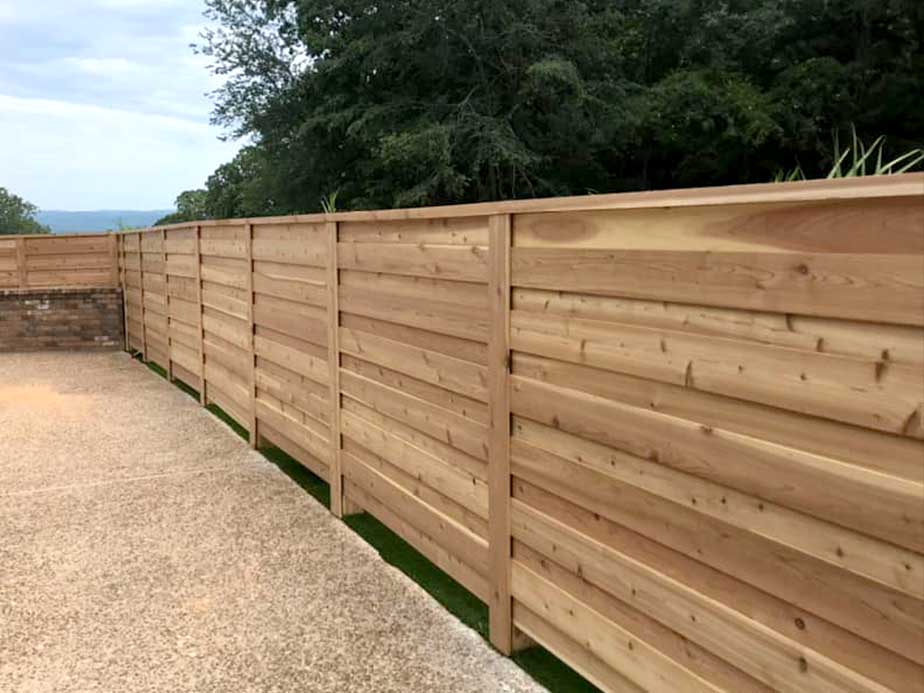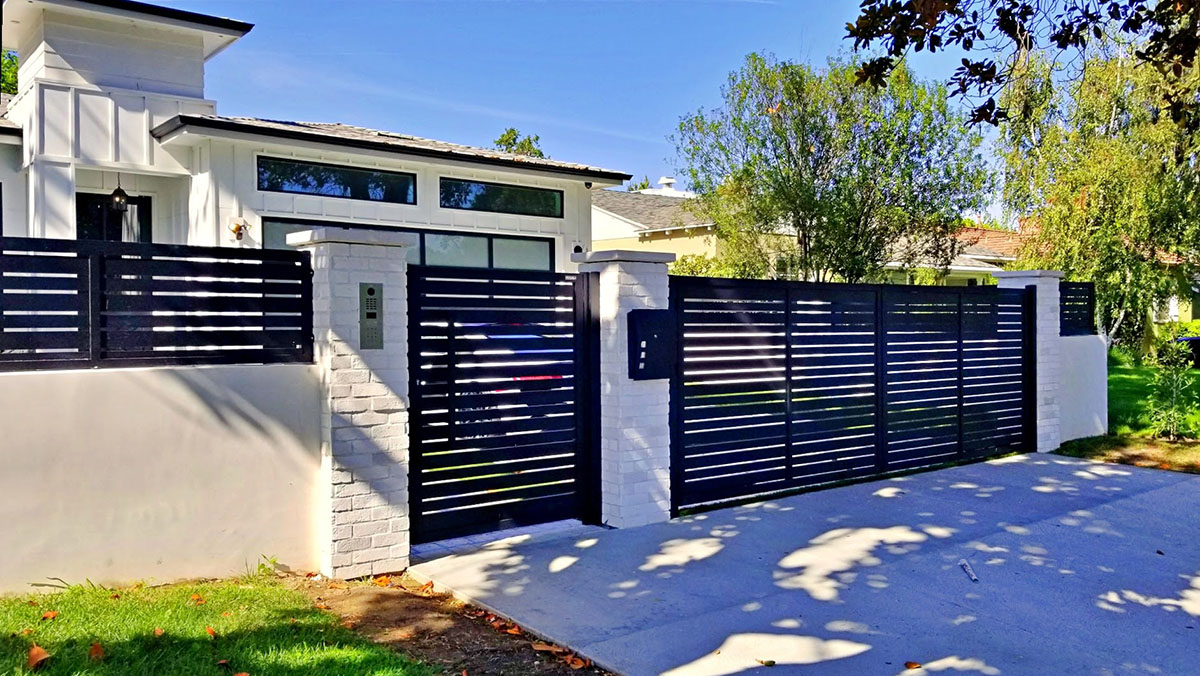Featured

As sustainability ends up being a growing top priority for homeowners and services, the demand for environment-friendly building materials expands to outdoor areas, including fences. Traditional fencing products such as steel, plastic, and timber can have considerable ecological effects, from deforestation to chemical treatments and plastic waste.
- Bamboo Fence. Bamboo is one of the most sustainable products on the market, and it is increasingly utilized in fence building and construction as a result of its rapid growth and toughness. Unlike wood trees, bamboo is a yard that can grow back totally within simply a couple of years, making it highly renewable. It's naturally immune to parasites and rot, which indicates it doesn't require rough chemicals or treatments, making it a green option.

Conveniences: Bamboo fencings are long lasting, low-maintenance, and biodegradable. They are naturally resistant to termites and wetness, decreasing the demand for chemical preservatives. In addition, bamboo aids lower dirt erosion due to its deep root systems. Factors to consider: Bamboo can be more pricey than some traditional wood fencing options, and it might not be ideal for areas with severe cool or freezing temperatures, as it can become brittle in time. 2. Recycled Products Fence. Numerous suppliers currently offer fences made from post-consumer plastic, recycled timber, or even repurposed steel. Several composite products, for instance, are made from recycled plastic containers, timber scraps, and various other materials that would certainly otherwise be disposed of.
Advantages: Recycled product fences help conserve natural deposits, decrease pollution, and lower the environmental impact of the production process. They can additionally use excellent longevity, resisting decay, mold and mildew, and termites. Factors to consider: While recycled material fencings are highly sturdy and environment-friendly, they may not have the exact same natural aesthetic that some property owners seek. Nevertheless, suppliers currently use styles that mimic the appearance of wood or stone. 3. Composite Secure fencing. Compound fence is made from a blend of timber fibers and plastic, frequently integrating recycled materials. This combination produces a highly resilient, low-maintenance fencing that does not need normal paint or staining, making it a lasting alternative. Compound fences are immune to rot, bugs, and weathering, which means they can last for years without the demand for regular substitutes.

Perks: Compound fencings are resilient and can withstand rough climate condition, decreasing the demand for substitutes or repairs. Given that composite products commonly include recycled content, they help reduce plastic waste. Additionally, they do not need harmful chemicals or therapies. Factors to consider: Compound fences can have a higher in advance price than conventional timber or vinyl, though their resilience and minimized maintenance prices often make them a much more affordable alternative in the long run. 4. Living Fencings. Living fences, likewise referred to as hedgerows, are a green and aesthetically pleasing alternative that involves growing thick bushes, trees, or climbing plants along your building line to develop an all-natural barrier. Popular plants for living fencings consist of boxwood, privet, and holly. These plants can be expanded to give privacy, windbreaks, and sound reduction while adding to ecological wellness.
Conveniences: Living fences advertise biodiversity, improve air quality, and absorb carbon dioxide, making them one of the most environment-friendly fence options. They likewise provide a natural habitat for birds and insects and can minimize sound pollution and assist manage temperature levels in your yard. Factors to consider: Living fences need normal maintenance, such as trimming, watering, and occasionally pest control. They likewise require time to establish and might not give immediate personal privacy contrasted to solid wood or plastic fencings. 5. Cedar and Redwood Fence. Cedar and redwood are prominent natural wood options for fences. These materials are durable and naturally resistant to rot, pests, and wetness, which implies they normally do not require making use of damaging chemical therapies. When sourced from sustainably managed woodlands, cedar and redwood fences can be an environmentally friendly option that offers both appeal and durability.
Conveniences: These timbers are biodegradable, renewable, and offer superb sturdiness and natural elegance. Cedar and redwood likewise have a reduced environmental impact when harvested sensibly, making them an environmentally friendly choice for numerous home owners. Considerations: While cedar and redwood fences have environmental advantages, they do still require occasional upkeep and are much more pricey than other timber options. It is very important to ensure that the timber is sourced from lasting forests to maximize its environmental advantages. 6. Stone and Brick Fence (Reclaimed) Rock and brick fences are low-maintenance and extremely sturdy, and they can be environment-friendly when made from reclaimed products. Reclaimed stone and brick are commonly recovered from old buildings or building and construction jobs, decreasing waste and conserving natural deposits. These products offer an ageless look and are very immune to weathering, making them a durable solution for fencing.
Conveniences: Recovered stone and brick are long lasting, cosmetically pleasing, and need minimal upkeep. By repurposing these materials, you help in reducing the need for new resources and decrease waste in garbage dumps. Factors to consider: The setup of rock and block fencings can be labor-intensive and more costly contrasted to other products, however their longevity and low upkeep demands can make them affordable in the lengthy run. Verdict. Green secure fencing choices are not only helpful for the environment however additionally supply resilience, reduced maintenance, and visual appeal. Whether you choose for bamboo, recycled materials, composite fence, living fences, or lasting timber like cedar and redwood, there are many ways to decrease your environmental footprint while enhancing your property's appearance. By picking these eco-conscious products, you can contribute to a healthier earth and produce an outdoor space that shows your worths.
Latest Posts
Check Out Oil Changes & More: Full Services Guide from Montclare Auto Repair
Published en
1 min read
Experience WyHy Federal Credit Union – Low Rates for Wyoming Residents
Published en
1 min read
Explore Your Financial Partner at WyHy – Financial Freedom for Your Goals
Published en
1 min read
More
Latest Posts
Check Out Oil Changes & More: Full Services Guide from Montclare Auto Repair
Published May 24, 25
1 min read
Experience WyHy Federal Credit Union – Low Rates for Wyoming Residents
Published May 24, 25
1 min read
Explore Your Financial Partner at WyHy – Financial Freedom for Your Goals
Published May 22, 25
1 min read